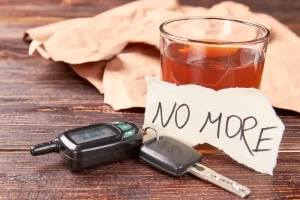Alcohol Dependence vs Alcohol Abuse: Understanding the Differences

However, the study did find that people who engaged in binge drinking more often were also more likely to be alcohol dependent. Alcohol abuse was defined as a condition in which a person continues to drink despite recurrent social, interpersonal, health, or legal problems as a result of their alcohol use. A person who abuses alcohol may also be dependent on alcohol, but they may also be able to stop drinking without experiencing withdrawal symptoms. Alcohol dependence causes people to keep drinking to avoid experiencing withdrawal symptoms. Alcohol abuse, on the other hand, involves drinking excessively without having a physical dependence. Alcohol dependence is characterized by symptoms of withdrawal when a person tries to quit drinking.

Connecticut Alcohol Abuse Statistics
In the chart, we see the relationship between average per capita alcohol consumption – in liters of pure alcohol per year – versus gross domestic product (GDP) per capita across countries. As we see, following prohibition, levels of alcohol consumption returned to similar levels as in the pre-prohibition period. By default, the data for France is shown – in recent decades, here, the share of beer consumption increased to make up around a fifth of alcohol consumption in France. Global trends on alcohol abstinence show a mirror image of drinking prevalence data. This is shown in the charts as the share of adults who had not drunk in the prior year and those who have never drunk alcohol. Data on the prevalence of binge drinking by age and gender in the UK can be found here, and trends in heavy and binge drinking in the USA can be found here.
- These factors can result in the onset of drinking and binge drinking, and in increased alcohol consumption (Tanski et al. 2015).
- This results in greater gender differences in alcohol use among Latinos compared with other U.S. populations, with recent trends suggesting similar levels of binge drinking between men and women in Western cultures (Iwamoto et al. 2012).
- Since the introduction of flavored alcoholic beverages in the 1980s, the alcohol industry has engaged in targeted marketing efforts toward youth in general, and especially young women (Mosher and Johnsson 2005).
- Read on to learn more about the symptoms, risk factors, treatments, diagnosis, and where to get support.
- Values shown are percentages of people aged 15+ with alcohol use disorder (WHO, 2016).
What Is Alcohol Dependence?
Alcohol marketing also can lead to youth and young adults developing alcohol brand preferences (Albers et al. 2014; Ross et al. 2015), which can influence their reports of alcohol consumption (Roberts et al. 2014). For example, youth reported on average 11 more drinks per month when responding to an online survey that used brand-specific measures compared with a survey using more general alcohol measures (Roberts et al. 2014). The relationship between alcohol brand receptivity and alcohol brand consumption also has been linked to whether and when adolescents begin to binge drink (Morgenstern et al. 2014). The chart shows direct death rates (not including suicide deaths) from alcohol use disorders across the world. The death rates are typically higher in Eastern Europe and lower in North Africa and the Middle East.
Alcohol use disorder
Across the world, men consume more alcohol than women, and women in more developed countries drink more than women in developing countries (Rehm et al. 2009). American Indian/Alaska Natives report the highest levels of binge drinking (30.2 percent), followed by Whites (23.9 percent), Hispanic/Latinos (23.2 percent), African Americans (20.6 percent), and Asians (12.7 percent) (SAMHSA 2013). Alarmingly, according to two nationally representative samples, trends in alcohol misuse increased among both men and women and African-American and Hispanic youth over the decade between 1991–1992 and 2001–2002. Rates of dependence also increased among men, young Black women, and Asian men during the same time period (Grant et al. 2004). Media exposure helps influence social norms about alcohol through advertising, product placements, and stories in a wide range of sources, including movies, television, social media, and other forms of entertainment. Although alcohol sales and marketing are highly regulated, people are exposed to a wide variety of alcohol and liquor advertisements, especially in the United States.
Arizona Alcohol Abuse Statistics

Further discussion on these risk factors can be found on our topic page on drug use. In the chart, we see the prevalence of alcohol dependence versus the average per capita alcohol consumption. There is no clear evidence that high overall consumption (particularly in moderate quantities) distinguish between alcohol abuse and alcoholism is connected to the onset of alcohol dependency. In the chart, we see data across some countries on the share of people with an alcohol use disorder who received treatment. This data is based on estimates of prevalence and treatment published by the World Health Organization (WHO).
Statistics indicate Ohio’s drinking habits are on par with national averages. North Carolina has a low rate of alcohol-related deaths per capita and a low rate of under-21 deaths. New Mexico has the third-highest number of alcohol-related deaths per capita among all the states; it’s 23.4% higher than Alaska’s per capita death rate, which is the nation’s second-highest. Nevada’s alcohol-related death rate per capita is high, but it has a very low rate of underage deaths. Florida has an elevated alcohol-related death rate but one of the lowest rates of under-21 deaths.
- In the chart, we see the average consumption (in liters of ethanol) of different beverage types per person in the USA since the mid-nineteenth century.
- Contact emergency services immediately if you experience symptoms such as fever, involuntary muscle contractions, seizures, delusions, hallucinations, or rapid mood swings as you withdraw from alcohol.
Behavioral Treatments

Death rates among females were highest from heart disease and stroke during each period. Among both males and females, alcohol-attributable death rates increased for most cause of death categories. The average number of sex-specific alcohol-attributable deaths increased among all age groups from 2016–2017 to 2020–2021(Figure).
Organized crime came into its heyday, and speakeasies became a fashion of the day. Prohibition was, by and large, a failure, but it still didn’t get repealed until 1930, just after the Great Depression hit.After World War II, alcohol started to rise in popularity again. We learned a lot about fetal alcohol syndrome and the risks posed by drunk driving. In 1984, the legal drinking age was raised from 18 to 21, and America came into its modern age of alcohol use. Some alcohol researchers have used multilevel approaches to distinguish among the causal effects of individual and neighborhood-level norms. For example, Ahern and colleagues (2008) found that neighborhood norms against drunkenness were a more robust and stronger predictor of binge drinking than permissive beliefs about it held either by the individual or family and friends.
Changes in Adult Alcohol Use and Consequences During the COVID-19 Pandemic in the US
- The first map shows this in terms of spirits as a share of total alcohol consumption.
- This interactive chart shows the average share of household expenditure that is spent on alcohol.
- It’s important for you to know these if you believe you or a loved one may have an alcohol use disorder.You or your loved one may have a hard time controlling how much you drink; one drink turns into three, and three turns into eight.
- Kwate and Meyer (2009) found a correlation between problem drinking among African-American women and exposure to alcohol advertisements, suggesting that as ad exposure increased, so did alcohol consumption.
- Prohibition was, by and large, a failure, but it still didn’t get repealed until 1930, just after the Great Depression hit.After World War II, alcohol started to rise in popularity again.
Severity is based on the number of criteria a person meets based on their symptoms—mild (2–3 criteria), moderate (4–5 criteria), or severe (6 or more criteria). Alcohol abuse refers to continuing to use alcohol, often excessively, even though it creates problems in a person’s life, including health, relationship, and work-related consequences. Alcohol dependence refers to being unable to stop drinking without experiencing symptoms of withdrawal.
